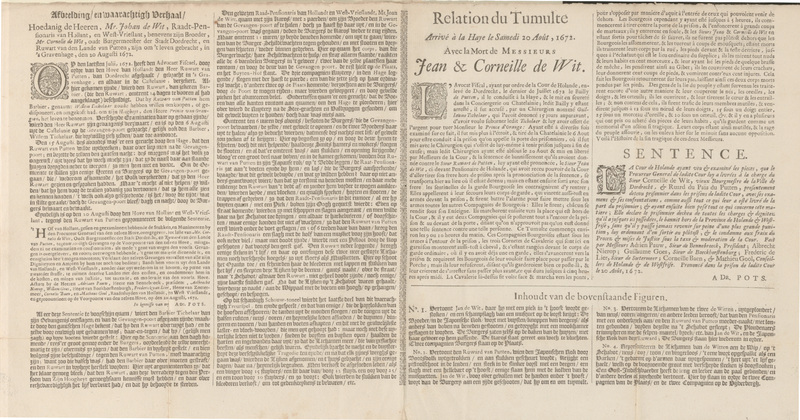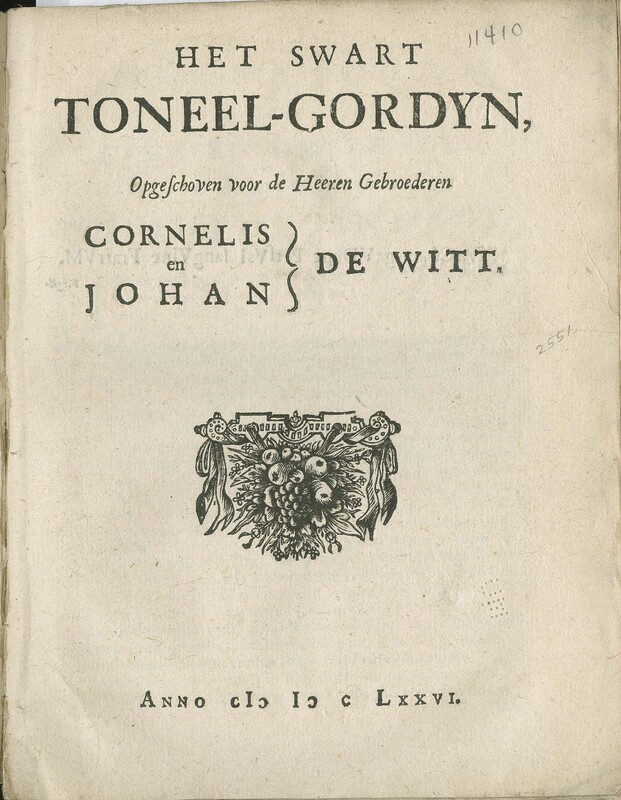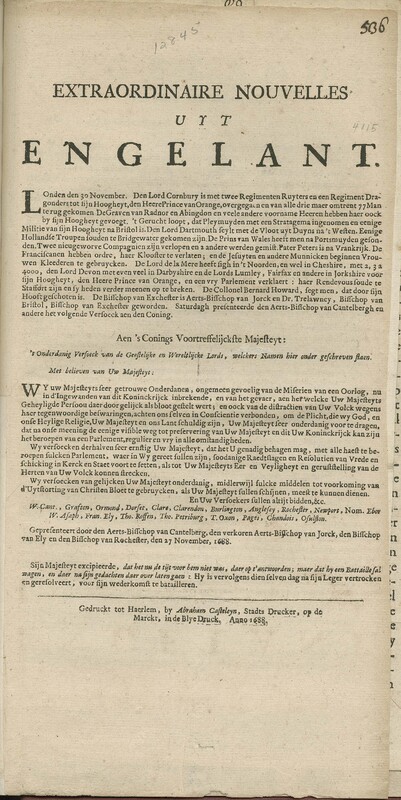Annus Horribilis (1672) & The Glorious Revolution (1688)
The year 1672, commonly referred to as the Disaster Year or annus horribilis in Latin, and the Rampjaar in Dutch, stands out as one of the most tragic chapters in Dutch history. In June of that fateful year, the army of Louis XIV, in alliance with England, Cologne, and Münster, launched an invasion from the east. They swiftly conquered the eastern Dutch military outposts, which had resisted Spanish attacks during the final decades of the Eighty Years’ War. Within a mere three weeks, French and Münsterite troops had seized control of three provinces: Gelderland, Overijssel, and Utrecht.
Adding to the devastation, several prominent churches, including those in Arnhem, Nijmegen, Zutphen, Deventer, Zwolle, and St. Martin’s Cathedral in Utrecht, were stripped of their Reformed Church status and reconsecrated for Catholic worship. Amidst this despair, a glimmer of hope arose with Admiral Michiel de Ruyter’s naval triumph over the Anglo-French fleet at Solebay, off the coast of East Anglia. This victory quelled the immediate threat of invasion from the sea. However, despite this naval success, English and French naval dominance persisted, compelling the Dutch fleet to retreat to their ports. Consequently, the General States enacted a ban on all boat and ship departures, which endured for two years.
The title page of this pamphlet features a woodcut illustration that aptly captures the prevailing mood of the times: a vignette portraying a dragon engulfed in flames and encircled by the ouroboros, an ancient symbol representing a serpent eating its tail. Accompanied by the Latin motto, perseveranter (persistently), this iconography appears to symbolize the cyclical nature of life, death, and renewal, possibly hitting at the eventual resurgence of the Dutch Republic. Penned by the famous Dutch poet, Katharyne Lescailje, the pamphlet contains a long poem recounting the Dutch navy's victory over the combined fleets of France and England near Schooneveld, Zeeland, under the command of Admiral Michiel de Ruyter (1607-1676) on June 7 and 14, 1673.
In general, the pamphlets published as a reaction to the invasion and the murder of the De Witt brothers in 1672, reflected existing ideological tensions in Dutch society. These tensions deepened the divide between two factions aligned with prominent theologians from the Dutch Reformed Church: Gisbertus Voetius (1589-1676) and Johannes Cocceius (1603-1669). The Orangist faction, ardent supporters of William III, rallied behind the Orthodox Calvinist Voetian wing, whose zealotry was criticized by Spinoza in his Tractatus Theologico-Politicus. In contrast, the so-called States party, led by the De Witt brothers, aligned with the more liberal Cocceian wing.
The invasion instilled terror and caused significant disruption to maritime commerce and industry, leading to numerous riots in the Netherlands. Many people assigned blame to those holding the highest political offices at the time, particularly focusing on the brothers Johan and Cornelis de Witt. Johan served as Pensionary, that is, Secretary General to the States of Holland, while Cornelis held various positions including bailiff of the Isle of Putten, member of the city council of Dordrecht, and official representative of the States-General, the national assembly responsible for international warfare. Above is an engraved title page of Tobias van Domselaer's vivid account of the idomestic civil disturbances (binnen-landtse borgerlyke) orchestrated by the Orangist faction against those who had supported the policies of the Witt brothers.
Above are displayed two large broadsides that, as parts of the same publication, chronicle the assassination of the brothers Johan and Cornelis de Witt. The first broadside is a textual account of the event in Dutch and French, which is complemented by a graphic four-panel illustration meticulously designed and engraved by Romeyn de Hooghe. The illustration comprises four engravings vividly depicting the brutal murders of Johan and Cornelis by a frenzied mob in The Hague on August 20, 1672. Following their apprehension, they were subjected to beatings, stabbings, and gunfire, culminating in their lifeless bodies being dragged through the city streets and publicly hanged upside down from the gallows. This horrifying spectacle was further compounded by mutilation, wherein the severed parts were sold. While direct evidence implicating William III remains elusive, it is widely presumed that he played a significant role as one of the main instigators.
The title page presented above is from a publication consisting of a series of poems extolling the virtues of De Witt brothers. This pamphlet also contains an allegorical folding engraving, the meaning of which is elucidated by the accompanying poem. In essence, it serves as an allegorical reflection inspired by the tragic death of the De Witt brothers. It features traditional symbols to underscore the fleeting nature of time and the incongruity of fate: Father Time with a scythe and hourglass, contemplates a skull and a large pendulum. The engraving includes portrait engravings of the two brothers, prints within the print, alongside the depictions of various books, probably alluding to the prospect of history offering a more equitable judgment of this disgraceful event in the future. For instance, one can discern a copy of Joost van den Vondel's allegorical play Palamedesof (1625) and Plutarch's Lives of the noble Greeks and Romans.
In general, the pamphlets produced in response to the invasion and subsequent murder of the De Witt brothers in 1672, reflected preexisting ideological tensions within Dutch society. These tensions exacerbated the divide between two factions aligned with prominent theologians from the Dutch Reformed Church: Gisbertus Voetius (1589-1676) and Johannes Cocceius (1603-1669). The Orangist faction, ardent supporters of William III, rallied behind the Orthodox Calvinist Voetian wing, whose zealotry was criticized by Spinoza in his Tractatus Theologico-Politicus. In contrast, the so-called States party, led by the De Witt brothers, aligned with the more liberal Cocceian wing.
The broadside showcased above stands as a pivotal artifact documenting the renowned Glorious Revolution. Originating by reports from London and dated on November 1688, the broadside chronicle the advancing campaign of William III's invasion of England, undertaken ostensibly to safeguard the Protestant faith from the rule of the Catholic King James II. Notably, the broadside features a roster of English nobles who pledged allegiance to the cause of William of Orange.

The Road to Sovereignty and Commercial Expansion

About the Exhibit







